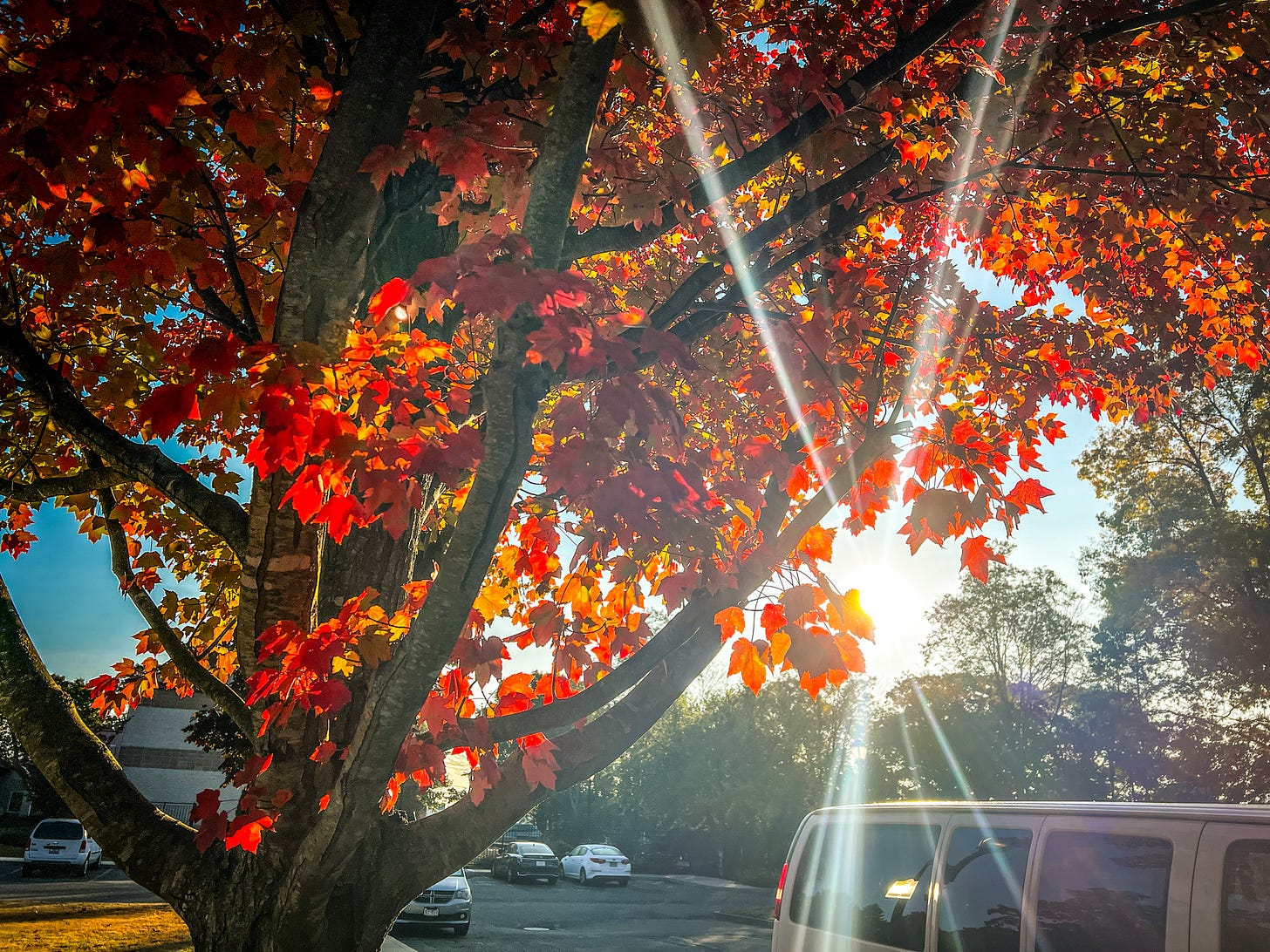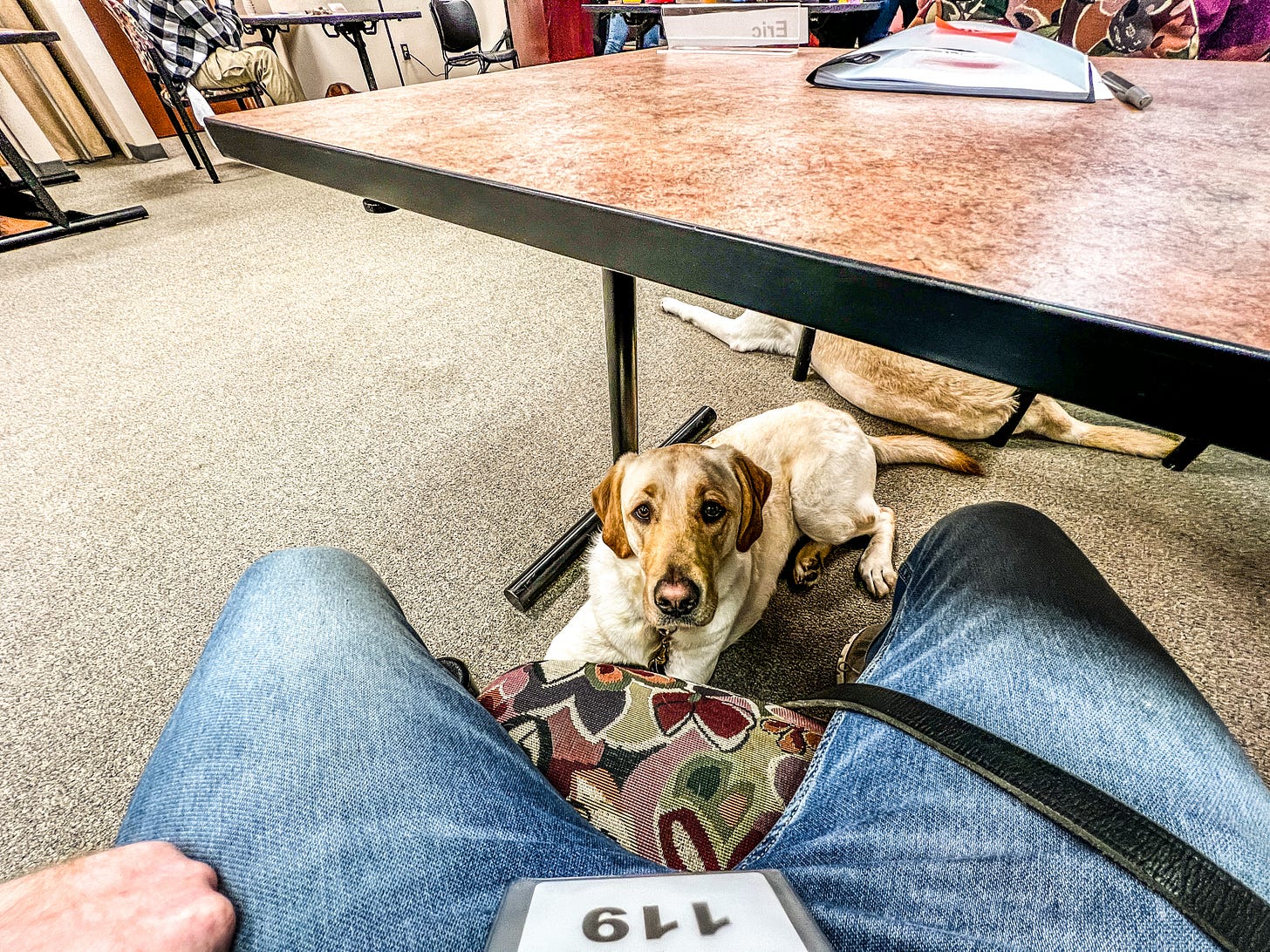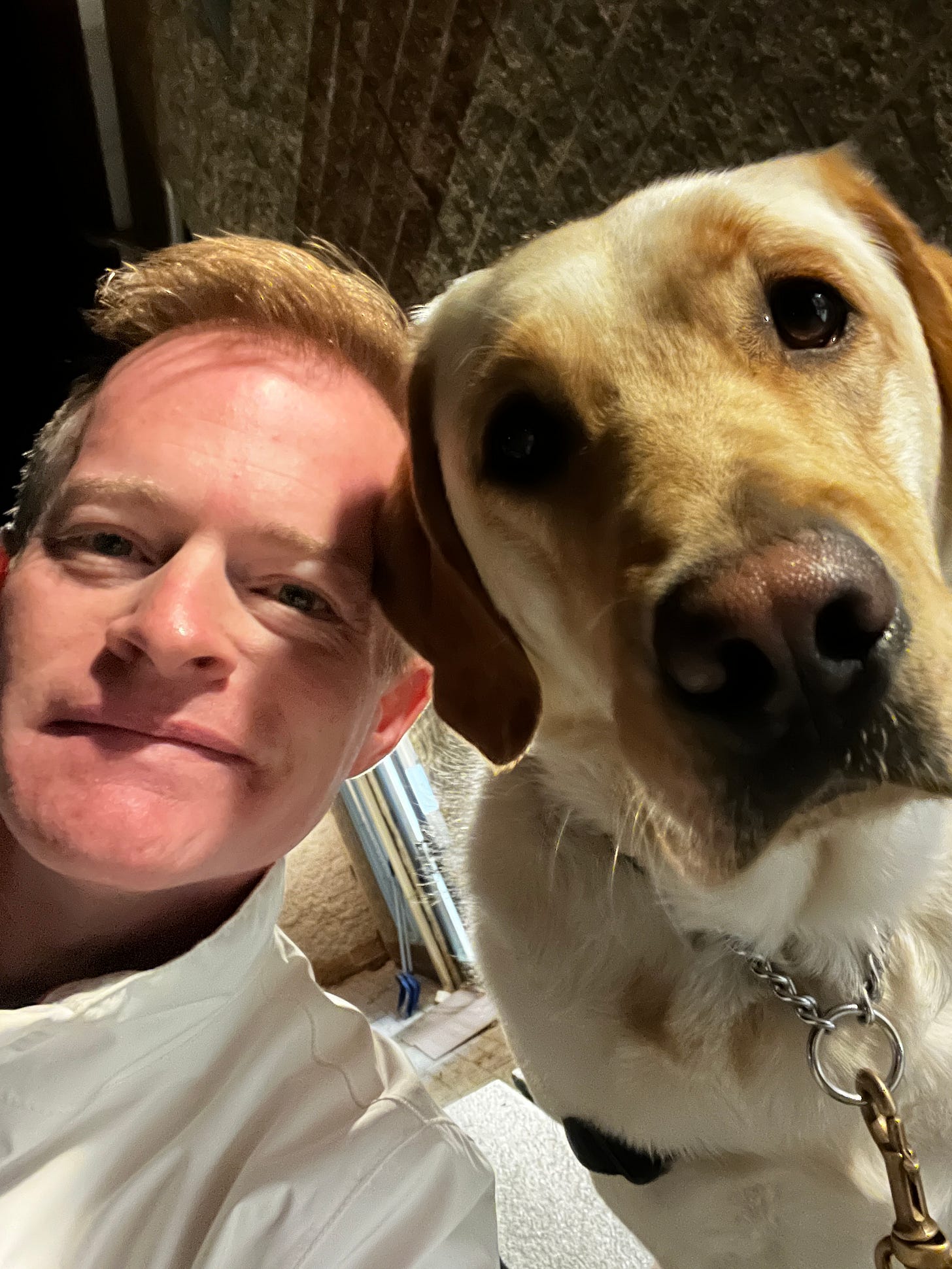About This Series
The Spirit of Recovery is a deeply personal account of my journey to receive and train with a PTSD service dog after a long wait and a longer struggle. Told in episodes, this series explores the awkward beginnings, emotional reckonings, and unexpected grace found in the process of learning to receive help. It’s about healing—not as a breakthrough, but as a quiet, daily decision to keep showing up.
The day began before dawn. Down the hallways I could hear the voices of early-morning trainers arriving for work, and the pat-pat-pat of paws on the beige tile floor—some fast and frantic, others slow and deliberate. Each sound was layered with meaning now. Every trainer was a guide. Every dog was a possibility. In the still dimness of my tiny dorm room, I did my morning exercises on the faux wood floor, waking my sleeping body while warming it against the lingering chill of the night air. As always, my body awakened faster than my mind, which preferred to wander and drift. And predictably, it wandered to dark places—old, familiar places—intent on resuming the thoughts I had fought so valiantly to eliminate the night before.
Thoughts about deserving.
Thoughts about being seen.
Thoughts about awkward conversations with strangers demanding I justify why I have this dog.
With precious little time left before the day’s schedule would begin, I opted to combine meditation and prayer with a plank exercise. It sounds silly now, but it worked. For three long minutes, I held my body in a rigid line, resting my forearms on the cold floor and whispering silent prayers with each exhale. I prayed for wisdom. For patience. For strength. For clarity. But more than anything, I prayed for peace of mind. Just a few moments of peace.
I showered and dressed quickly, then walked outside into the bright, chilly autumn air—the last untouched space of peace I could find before the day truly began. I wandered through the mock city blocks and simulated construction zones used to train the dogs, past concrete barriers, fake storefronts, and ADA-compliant ramps, until I arrived at the park area—my sacred refuge these last three days. Here, the trees were on fire with color. The reds and oranges of the oak and maple glowed like stained glass windows as they caught the morning sun. The leaves rustled softly overhead, a whisper of reassurance I clung to. I prayed, and walked; I walked and prayed. I inhaled the earthy scent of mulch, leaves, and dew, held it deep in my lungs, and tried to slow my heartbeat and hush my thoughts.
Today was the day I had been waiting for for two years—a moment that, in truth, I had been preparing for much longer than that. It was a day of promise, for both dog and man. I needed to be calm. I needed to be ready. I needed to accept that this was happening. That this was supposed to happen. That this was not something I needed to earn or explain or rationalize. This was something I was being given. I had to practice receiving.
My time now up, I whispered a thank you to God for this stolen peace and headed back inside to join the other students for breakfast—homemade pumpkin pancakes, fresh fruit, and sausage. The dining hall buzzed with small talk and quiet anticipation. After breakfast, the lectures resumed: proper grooming techniques, interpreting dog behavior—anxiety, aggression, fear. How to regain control in public spaces full of unexpected stimuli. I scribbled notes I would never look at again, not because they weren’t useful, but because everything was imprinting on me like ink on wet paper. I wouldn’t forget a thing.
Of all the amazing qualities I had witnessed in these animals so far—loyalty, gentleness, precision—discipline was the one most on display. Even the procedure to feed the dogs was regimented: multiple steps, exact sequencing, specific timing. The dogs had learned to thrive in this rhythm. It gave them purpose. It gave them calm. I realized then it would take no small amount of discipline on my part to carry these routines forward. A thought both humbling and intimidating.
As I listened to the lecture, I worked the thick leather leash that had been issued to me through my hands. Its hide was stiff and unyielding at first, but with each twist and bend, it softened—warmed by friction and intent. I twisted it back and forth, breaking it in, making it pliable. A fitting metaphor for not only the training I was about to undergo, but for the larger recovery still unfolding in my life. Rough edges slowly softening. Becoming something useful. Something strong and responsive.
There was a crackling, shared energy in the room as the moment drew near. Every student had waited months, some years. All of us had imagined—sometimes obsessively—the dog that would soon become our lifeline. We imagined the coat color, the eye shape, the temperament. And now, it was actually happening. The instructors, sensing the tension, decided to let the dam break just a little. They handed out cards with the name and breed of our dog.
I learned mine was a female yellow Golden Retriever Labrador cross named Spirit.
Spirit.
A fitting name for my dog, I thought. Lately, it seems all I think about is spirit—God’s spirit. What that is. What it means. How it works. Its place in my life. I try not to cry for the hundredth time.
And then, it is time.
We are each led back to our rooms and told to wait. Our leashes hang outside our doors like quiet sentinels. I sit alone, barely breathing, as I hear the pitter-patter of paws on the hallway floor—then tails thumping against the walls in rhythmic percussion. Anticipation in canine form. A soft knock at the door. I rise to my feet as the knob turns. And then she’s there.
Tail and body wagging furiously.
Eyes wide and joyful.
A grin spread across her entire being.
Her coat is elegantly white, with gentle tan highlights along her back and flanks that betray her Golden Retriever lineage. Her eyes, a rich caramel brown, are framed by expressive, almost theatrical eyebrows. Her light brown floppy ears fall like curtains on either side of her face—softening every feature, amplifying her charm.
She is beautiful.
She is radiant.
She is mine.
I kneel and hold out my hand. She sniffs, then licks. And just like that, a silent understanding passes between us. I am soon left alone with her to begin the process of meeting each other, first through mutual exploration of the tiny room, then through simple commands and small treats. Eventually, when her curiosity is satisfied and her initial energy spent, we settle into what will become the longest staring contest ever conceived between man and beast.
She finds my eyes. Locks on. Refuses to look away.
No effort on my part. No command given. Just a dog who somehow knows that my eyes are the anchor point of my world. And having found them, she refuses to let go. For the rest of the day—through each exercise, each new challenge—she returns to them, again and again, with a steady presence that feels almost sacred. What do you need, they ask? Just tell me. I’m here.
Training begins in earnest. Indoors. Outdoors. I quickly learn that Spirit is as competent as she is committed. Waiting patiently at thresholds? No problem. Walking at close heel? Easy. Lying down quietly under my chair without a fuss? Like she’s done it a thousand times. The only variable in this equation is me. I realize quickly that any mistakes will likely come from my undisciplined approach, not hers. But for now, that doesn’t faze me. We are already forming a bond that feels older than time.
Later that evening, we’re joined by the CEO, who gives us an overview of the organization who so generously supplies dogs to veterans at no cost. The numbers are staggering—1,100 veterans served since 2003, with 120–150 dogs placed each year. 165 paid employees. Over 1,600 volunteers. Fourteen correctional institutions that raise puppies and consistently produce the most dependable dogs in the program. I learn that Spirit was trained for the first year of her life in a prison in Massachusetts, just 20 minutes from where I was born.
Roughly 400 dogs are bred annually, but fewer than half make it through the rigorous training to serve as guide or service dogs. A 60% attrition rate. The bar is high.
We learn about Sully, the service dog who stayed by President George H. W. Bush’s side until the day the former president died. The viral photo of Sully lying beside the President’s coffin launched the organization into the public eye. Since then, Good Morning America, pro sports teams, corporate sponsors—everyone has jumped on board. But beneath the sudden fame, the core of this place remains unchanged: a tight-knit community, filled with people who have dedicated their entire lives to training and caring for these remarkable dogs. Trainers who started as interns and have now been here for decades. One just retired after 42 years. They know every dog they’ve trained by name. By heart.
I sit through this lecture, long into the evening, soaking it in. I’m stunned by the devotion and excellence on display. The food servers are volunteers. The drivers who pick us up from the airport more than an hour away? Volunteers. The kennel workers who clean and care for the dogs? Volunteers. The heartbeat of this place is love.
And as I sit back in my chair, reflecting on all of it, I glance down.
There she is.
Spirit.
Wedged under the table between my knees, staring up at me with those soulful brown eyes. Still watching. Still waiting.
Ten hours in, and she hasn’t stopped looking at me.
Something tells me she never will.
About the Author
ES Vorm, PhD, is a combat veteran and aviator turned scientist who found out the hard way that achievement doesn’t equal healing. After years spent in special operations, military aviation, and human-machine teaming research, he now writes about the quiet, uncertain work of recovery—what it means to receive love, reimagine identity, and find grace in unlikely places. He lives with his family, his service dog, and a growing capacity for stillness.









